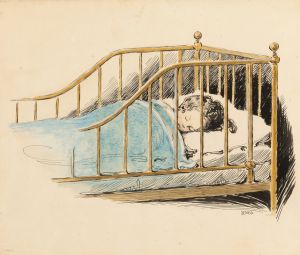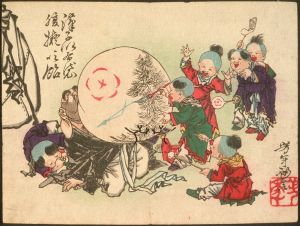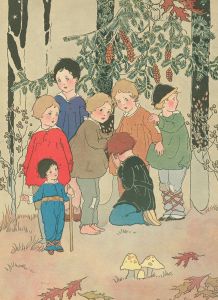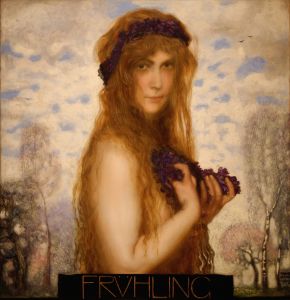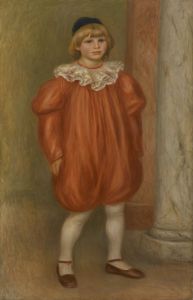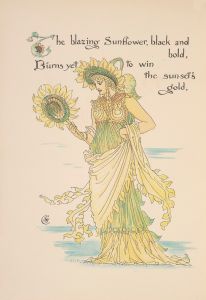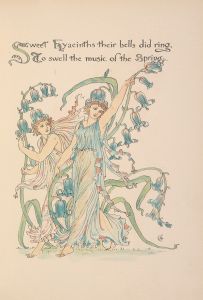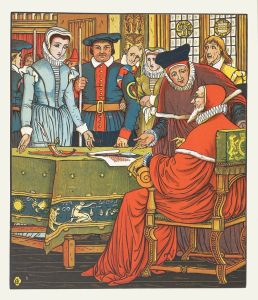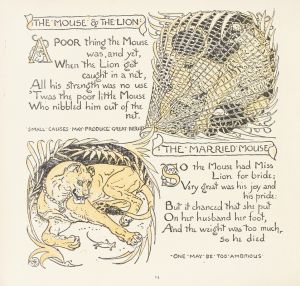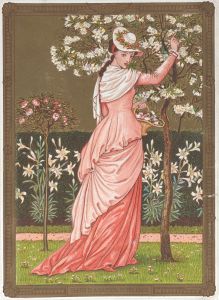
Flora’s feast; A masque of flowers Pl.23
A hand-painted replica of Walter Crane’s masterpiece Flora’s feast; A masque of flowers Pl.23, meticulously crafted by professional artists to capture the true essence of the original. Each piece is created with museum-quality canvas and rare mineral pigments, carefully painted by experienced artists with delicate brushstrokes and rich, layered colors to perfectly recreate the texture of the original artwork. Unlike machine-printed reproductions, this hand-painted version brings the painting to life, infused with the artist’s emotions and skill in every stroke. Whether for personal collection or home decoration, it instantly elevates the artistic atmosphere of any space.
"Flora’s Feast; A Masque of Flowers" is a notable work by Walter Crane, an influential English artist and book illustrator of the late 19th and early 20th centuries. Published in 1889, this book is a prime example of Crane's contribution to the Aesthetic Movement and his mastery in combining art with literature. The book is a visual celebration of flowers, presented in the form of a masque—a form of festive courtly entertainment that flourished in 16th and early 17th century Europe.
Walter Crane was renowned for his innovative approach to book illustration, and "Flora’s Feast" is no exception. The book is composed of a series of illustrations that depict various flowers personified as figures in a masque. Each illustration is accompanied by a short verse, written by Crane himself, which adds a narrative element to the visual feast. The illustrations are characterized by Crane's distinctive style, which includes intricate line work, vibrant colors, and a harmonious composition that reflects his background in design and his interest in the decorative arts.
Plate 23 of "Flora’s Feast" is one of the many illustrations in the book that exemplifies Crane's artistic vision. While specific details about Plate 23 are not widely documented, it can be assumed that, like the other plates in the book, it features a flower or group of flowers personified in a whimsical and imaginative manner. Crane's work often drew inspiration from nature, mythology, and classical art, and these influences are evident in the elegant and stylized forms of the figures in "Flora’s Feast."
Crane's illustrations in "Flora’s Feast" are notable for their use of color and form. He employed a palette that was both rich and subtle, using color to enhance the mood and theme of each illustration. The figures are often depicted in flowing garments that mimic the shapes and colors of the flowers they represent, creating a seamless blend of human and botanical forms. This approach not only highlights Crane's skill as an illustrator but also reflects the broader artistic trends of the time, which emphasized beauty, harmony, and the unity of art and nature.
"Flora’s Feast" is also significant for its contribution to the development of children's book illustration. Crane was a pioneer in this field, and his work helped to elevate the status of illustrated books for children, making them not only educational tools but also works of art in their own right. His ability to create engaging and visually stunning illustrations set a standard for future generations of illustrators.
In summary, Walter Crane's "Flora’s Feast; A Masque of Flowers" is a testament to his artistic talent and his ability to merge art with literature. Plate 23, like the other illustrations in the book, showcases Crane's unique style and his dedication to creating beautiful, imaginative works that continue to captivate audiences. The book remains an important part of Crane's legacy and a cherished example of late 19th-century book illustration.





